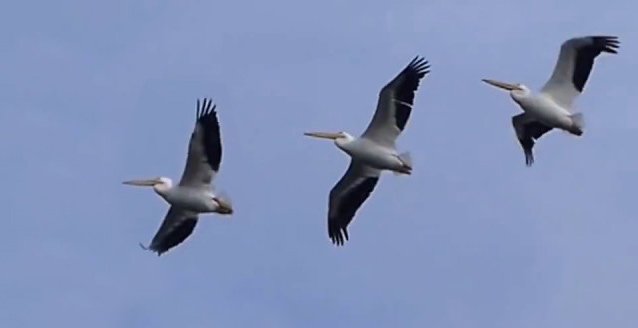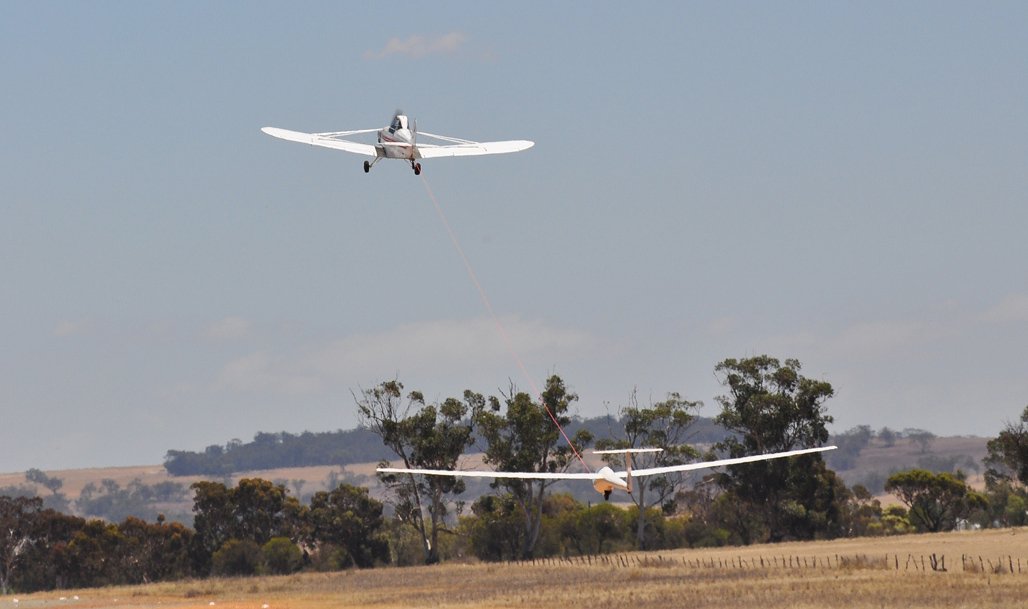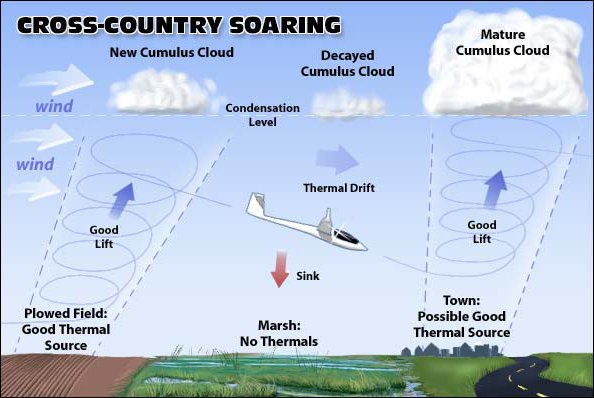How Gliders Fly
Have you ever seen a flock of pelicans circling high in the sky or a seagull hovering motionless over a headland? The pelicans are flying in a column of rising air called a Thermal, and the seagull is flying in the rising air deflected upwards by the cliff face. In both cases, the birds are in an air mass that is rising faster than they are descending through it. Gliders exploit the same natural phenomenon.
Unlike pelicans, glider wings don’t flap, so they need some help to get airborne.


The most common glider launching method in Australia is called Aerotow – using a special tow plane to tow the gliders up. Another method is using a ground-based winch and a very long cable. Aerotow launching is the method that we use at Beverley (though some of the private gliders do have engines that can get them into the air). The tow plane typically takes the glider to around 2000 feet (about 600m) above the ground.
From this height, without finding any lift, a glider can stay in the air for around 20 minutes and fly a distance of up to 15 kilometers – but that’s only the start of the fun…
Glider pilots love find and ride the free lift that comes these thermals, or the updrafts caused when the wind is deflected up by hills or mountains. By gaining height this way, they can extend their flights and stay up as long as the lift is present. In summer, this can be for up to seven or eight hours and long distances can be covered by flying from one source of lift to the next.
Glider pilots always make sure that they are able to reach a safe landable place in case they can’t find any more lift and they are trained and practice outlandings before being allowed to fly cross-country by themselves.
Outlanding occasionally is part of the sport. If in a paddock, you often get to meet the friendly local farmers who don’t mind the occasional drop in provided you respect their property and thank them accordingly. Depending on your distance from home, you can often call up the tow plane to fly out to re-launch you and tow you back. Alternatively, club members are always ready and willing to drive your trailer out to where you landed, and help you dismantle your glider into the trailer for a road trip back. Remember, one day, they may call on you to do the same for them!
To learn more about gliding, visit the Gliding Federation of Australia.
To see some movies of flying at our club click here.

(The above soaring illustration is courtesy
of the Soaring Society of America)